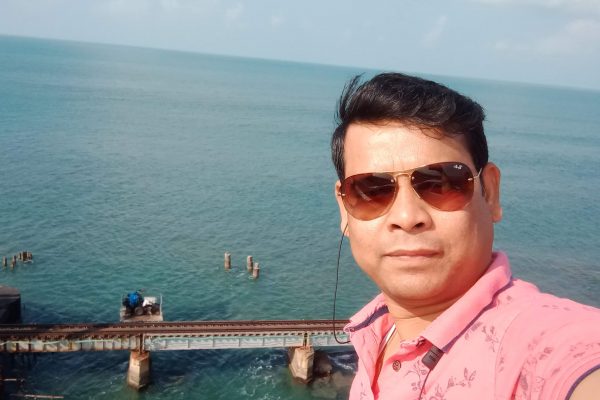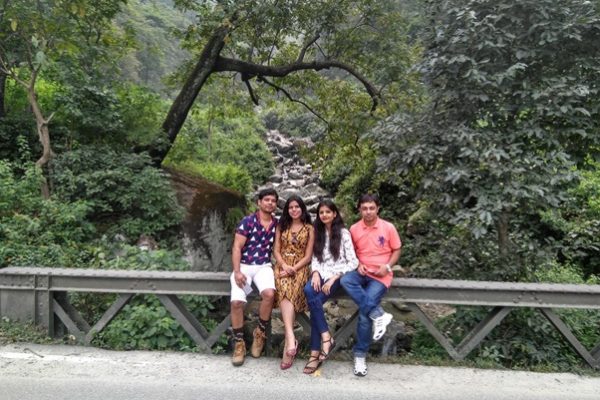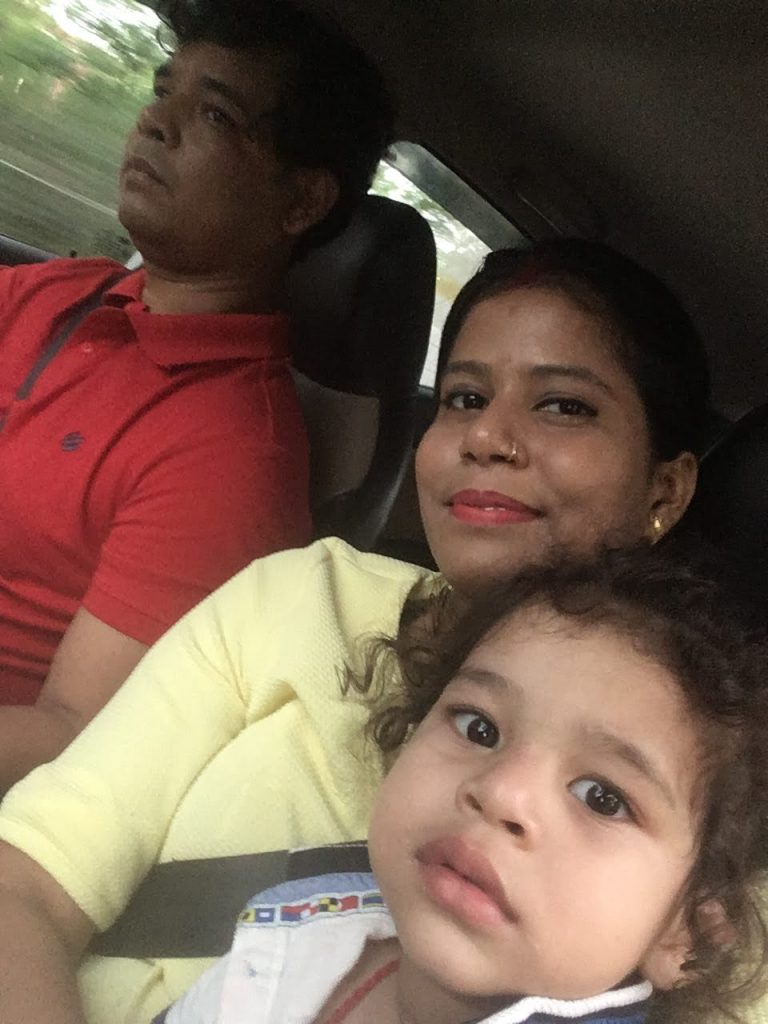
Life is a journey that everyone takes. It has its ups and downs, sweet and bitter moments. These moments become memories, and their experience shapes who we are. I always believe that the ‘Travel Memories’ of any person are the best memories of their lives. It involves numerous moments with their ups and downs, bitter and sweet, but at the end of the day, it brings happiness and experience.
Akanksha (my wife and partner in crime), along with Ashvik (my 2-year-old kid), and I got a chance to drive from Delhi to Dhanbad. It was a 1260 km drive, which included driving on the roads of 1 UT (Delhi) & 3 states (UP, Bihar, and Jharkhand) of India. We covered the journey in 22 hours of continuous driving. Yes, you read it right, 1260 km in 22 hours of continuous driving (with no stops except for refueling).
Please continue reading for the full story, which might help you plan your travels. Certainly, the experience and memories are ours, but they might assist in planning yours.
Happy reading!!
The Planning
The most important part of this journey was making the firm decision to drive such a long distance. For people like us who don’t often undertake such lengthy drives, it was natural to be cautious about safety. We had concerns: what if our car broke down, the fuel tank emptied before reaching the next filling station, or how safe the roads were at night, especially while traveling with my wife and our 2-year-old kid. In short, we had numerous concerns, and I’ll describe below how we handled each situation.
A. The Route: The first thing we decide is the route. We took help from Google Maps. Below is the route we chose to follow –

After Raebareli, there are two routes to reach Varanasi. However, we opted for the above route to stay on NH 19, the main highway from Delhi to Dhanbad (Kolkata). We believed it would be bustling 24×7, thereby reducing the risk of driving alone at night.
We also made an effort to familiarize ourselves with the route map, memorizing the names of villages and towns along this path. Passing through these landmarks assured us that we were on the right track. Traveling on roads bordered by farmlands or small villages where your location is uncertain is an experience. Despite having Google Maps on your phone, the joy of spotting and recognizing the signboards of villages or towns you’ve memorized, confirming you’re on the right route, is an entirely different and gratifying feeling.
B. The Food:
Next, we had to determine the type and quantity of food to stock up for the journey. Ensuring an adequate supply of milk for Ashvik was also a priority. Although we planned for one continuous drive, we prepared for a two-day journey in case things didn’t go as expected, allowing for a break in the journey. Consequently, we stocked up on food for two days.After extensive discussions, we narrowed down our list to the following items:
a) Puri and Aloo ki Bhujia for breakfast
b) Sattu ke Parathe for lunch and dinner
c) Sattu for drinking
d) Biscuits, Chips, Milk Cake, Milk Bread, and Butter
e) Nanpro for Ashvik.
We decided against carrying liquid milk due to management difficulties and instead opted for hot water in a Milton bottle along with NanPro (Formula Milk). f) Tea stored in a Milton bottle g) 15 bottles of 1-liter water each. We avoided 2-liter bottles as they were less convenient to use in a moving car. h) Extra Water – We also filled up 8 liters of tap water in different bottles for other uses like hand wash and dish washing
C. The Car: We traveled this distance in our very beloved Hyundai EON. Being my first car, I have numerous memories associated with it. If you’re interested in the car’s condition, it’s a 2015 model and had covered 42,000 kilometers. Thankfully, it was in good condition. Despite regular servicing and routine oil changes, the service center informed me about the car’s age of 5 years and a potential issue with the battery. To prevent any problems on the road, I proactively had it replaced. Apart from that, everything else was fine
The Trip Begins
Delhi to Agra via Yamuna Expressway

We commenced our journey on June 18, 2020, at 5:00 AM sharp, arriving at the first toll plaza of Yamuna Expressway in Jewar (via Noida Expressway) by 6:00 AM. I’ve frequented this expressway several times, particularly up to Agra, making this my eighth visit since 2015. Interestingly, my first long drive with my EON was precisely to this very place.
Yamuna Expressway, also known as Taj Expressway, spans 6 lanes and covers a length of 165 kilometers. It originates from Greater Noida and concludes in Agra, featuring three toll plazas: Jewar (38 km), Mathura (95 km), and Agra (150 km). It boasts multiple exit points connecting various cities in Uttar Pradesh, such as Aligarh. (Taj Mahal is a short drive away from one of its exits; for more details, feel free to look it up on Google.) From here, you have the option to proceed via NH-19 towards Kanpur. Although this route was available to us, we chose to avoid it after learning that it’s not a preferred choice among other travelers due to traffic, road conditions, and various other reasons.
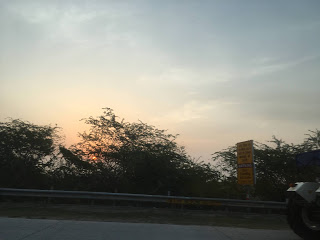
As we had a full tank of fuel before starting our journey, we didn’t make any stops along this expressway. However, it’s worth noting that there are petrol pumps along with rest services available at each location near the toll plaza. The entire stretch is constructed with concrete, resulting in a smooth road surface, though it lacks the usual smoothness associated with driving on tarmac. There’s also noticeable tyre friction sound throughout the expressway. Despite this, we were able to maintain a speed of 100 km/hr here, and the traffic ranged from light to moderate.
Agra to Lucknow via Agra-Lucknow Expressway
Agra-Lucknow Expressway is India’s longest 6-lane expressway, spanning 302 kilometers. Starting from Agra, it extends to Lucknow, linking several cities in Uttar Pradesh such as Firozabad, Shikohabad, Etawah, Kannauj, and Unnao.
To access the Agra-Lucknow Expressway from Yamuna Expressway, there is a connecting road for which you pay Rs. 35. When we reached the first toll plaza at 8:15 AM, it was our inaugural drive on this expressway. Gathering information from those who had previously traveled on this road, we learned that it spans 308 kilometers, with a major concern being the locations of petrol pumps. We were informed that there is a petrol pump approximately every 100 kilometers.
Having started our journey with a full tank of fuel, we didn’t stop anywhere for refueling. As we covered around 90 kilometers on the Agra-Lucknow Expressway, we began feeling a bit concerned as there was no sign of a petrol pump. Near Etawah on this route, there is a Reliance Petrol Pump visible, but reaching it requires exiting the expressway, and we were informed that re-entry onto the Agra-Lucknow Expressway would incur an additional toll fee. However, fortunately, we found the first petrol pump after approximately 105 kilometers. About 5 kilometers prior, a signboard indicated its presence. There was an exit/slip road to access the Indian Oil Petrol Pump. In addition to the petrol pump, rest services were also available at this location
It was 9:15 AM when we paused for a 15-20 minute break to enjoy breakfast and stretch our legs. During this break, we refueled the tank and checked the car’s tire pressure. It’s crucial to periodically check tire pressure during long journeys to minimize the risk of tire bursts. In our case, we made sure to do this every 300 kilometers. At this stop, we discovered that the tire pressure in all tires was between 47-49, significantly higher than the recommended 33-35. We promptly adjusted the pressure.
Resuming our journey, we noticed the next petrol pump located another 100 kilometers ahead. It was accompanied by a similar rest service building, following the same format, albeit this time with a Reliance petrol pump. Interestingly, we observed a parallel set of services on the opposite side of the road, just a few kilometers apart.
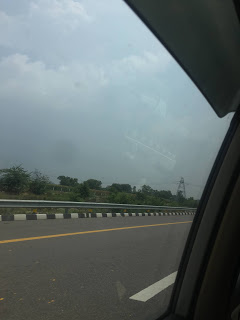
The 302-kilometer expressway offered a remarkably smooth driving experience, akin to gliding through butter. If your car is equipped with cruise control, setting it at the 100 km/hr speed limit allows you to savor the marvels of its engineering and terrain. However, this doesn’t mean you won’t enjoy the road without cruise control. For enthusiasts of driving, this road fulfills all expectations.
This expressway typically remains free from heavy traffic, and as we traveled during daylight hours, I can’t speak to its safety at night. However, I want to highlight that we noticed UP police patrols at regular intervals, contributing to a sense of security. Additionally, a noteworthy experience was crossing the Ganga in between, specifically at Hashimpur Ganga Bridge.
Lucknow to Raebareli on NH -30
We arrived in Lucknow, famously known as the city of Nawabs and ‘Pehle Aap’ (‘After you’), by 11:45 AM and opted for the connecting bypass to Raebareli. Although we would have cherished exploring the city and relishing its renowned Tunday Kababi and Lucknawi Biryani, our tight schedule urged us to continue towards Raebareli. The distance between Lucknow and Raebareli is approximately 75 kilometers.
Navigating through Lucknow’s traffic took nearly an hour, despite using the outer bypass road. However, after covering about 15-20 kilometers, the traffic eased into a moderate flow, interspersed with a few empty stretches along the road.
After traveling on roads like the Yamuna Expressway and Agra-Lucknow Expressway, transitioning to a 4-lane bypass/NH feels like a sudden change. We experienced a similar feeling on NH 30, a 4-lane stretch. While the road was in good condition, the adjustment from the expressway experience prompts you to take a moment and adapt to the different driving environment. 🙁
Raebareli to Varanasi on NH-30 & NH-19
Continuing on NH-30, we set our course towards Varanasi, coidering two possible routes found on Google Map from Raebareli:
The first route led via NH-31, passing through Salon, Pratapgarh, Machhli Shahar, Bhadohi, and finally reaching Varanasi.
The second route followed NH-30 through Unchahar, Manikpur, Kunda, Handia, leading to Varanasi.
Remember when I mentioned memorizing all the route and city names? It paid off! After Raebareli, we inadvertently veered onto NH-31 instead of NH-30. Our realization struck at Salon when I recalled that Salon wasn’t part of our intended route. Our mistake stemmed from blindly following the ‘shorter duration’ road suggested by Google Map. While it wasn’t the fault of Google Map—merely part of its services—one must be cautious when selecting routes.
Upon realizing our error, we promptly rerouted towards Kunda, where the map revealed a connecting route to Manikpur on NH-19. We couldn’t speak about the Raebareli-Unchahar-Manikpur road, but the road leading to Salon-Manikpur was a visual treat. Despite being a 2-lane stretch, the road condition was commendable, resembling an NH. The landscape showcased picturesque small villages, with locals selling fresh mangoes by the roadside. As if on cue, a sudden drizzle transformed the weather, adding to the scenic beauty. It was an unexpected delight that made the journey even more enjoyable
Varanasi to Dhanbad on NH -19 – So far so good, but what lied ahead we didn’t knew!!
The journey so far had been fantastic. Despite feeling a bit tired, we were as refreshed as the morning. It’s crucial to note for anyone traveling on this road towards Dhanbad or Kolkata to consider taking a night break at Varanasi. Varanasi serves as a mid-point where one can rest for the night and embark on the onward journey feeling rejuvenated the next morning. While 99% of travelers follow this practice, we found ourselves among the remaining 1%. Little did we know that tougher times were looming ahead, completely unbeknownst to us.
Remember when I mentioned at the beginning that life is a journey and traveling draws many parallels? Much like in life, during a journey, you start with enthusiasm, give your best, face distractions, overcome obstacles, and relish success only when you push yourself beyond limits, navigating through challenging times.
As we reached Varanasi, the evening dusk was swiftly setting in at 6:30 PM. We had hoped to catch the Ganga Arti while crossing the bridge, but it seemed we were a bit early or perhaps the bridge wasn’t the right spot for the ceremony. Instead, we could only witness the tranquil banks of the Ganges. Nonetheless, experiencing the serenity of the Ganges is always a unique pleasure
We immediately noticed upon merging onto NH-19 that several overpasses and ongoing road construction caused multiple diversions. As we progressed, the count of diversions became indistinguishable until we reached Dhanbad. Until we reached Varanasi, it hadn’t dawned on us that this constant road construction would persist until our final destination. Consequently, the real headache commenced post-crossing Varanasi.
Between Varanasi and Mohaniya toll in Bihar, the driving experience seemed devoid of any traffic sense. The road towards Varanasi (to my right side) often encountered complete jams, with no movement of traffic on the opposite side, appearing almost immobile. We observed truck drivers cooking meals by the roadside, possibly preparing dinner. It was unclear how long they had been stationary or how much longer they would remain so.
To my surprise (or perhaps it was expected), traffic from the opposite side was diverted to our side. We found ourselves driving amidst oncoming traffic, with vehicles approaching from the front in two lanes. This setup wasn’t adequate, as oncoming vehicles weren’t hesitant to suddenly change lanes. Trust me, it was a harrowing driving experience, compounded by poor road conditions, ongoing construction, diversions, and the challenge of adjusting from daylight to nighttime driving conditions.
Later, I learned that the region bordering UP-Bihar at the Naubatpur checkpost in Chandauli was causing chaos in this stretch from Varanasi to the Mohania toll plaza.
After crossing the Mohania Toll, the road improved, allowing us to regain a speed of 100 km/hr. Around 8:50 PM, as we crossed the Dehri on Son Bridge, we suddenly encountered an extremely congested jam. This particular area was filled with numerous tractors and trucks, seemingly waiting for sand loading. The situation appeared so dire that we thought we might have to spend the rest of the night in the car, as not even bikes could move through the crowded space.
Fortunately, after about 30 minutes, we noticed one tractor making a move. Taking advantage, we followed suit, maneuvering through the jam from the wrong side. A few kilometers ahead, we found ourselves back on a decent road, driving at a reasonable speed once again.
By around 10:00 PM, we made a brief stop between Aurangabad and Shergahti (Gaya) for our next break, primarily for refueling. Despite feeling fatigued, the encompassing darkness of the night discouraged unnecessary halts. Our visibility was limited to the road, urging us to continue without delay.
As we traversed Sherghati, we encountered a particularly challenging stretch spanning about 8-10 kilometers. The road condition, especially on the bridges, was severely deteriorated. Each bridge exhibited large potholes of approximately 1-1.5 feet, leaving minimal space to drive. Navigating these bridges required skill; otherwise, risking damage to our cars was inevitable. My advice would be to restrict speeds to 40 km/h on level ground and 10-15 km/h while crossing the bridges in this area. It consumed over an hour to traverse through the Shergahti region.
From Dobhi onward, the road improved, albeit with multiple diversions along the way. Driving through the forested area, which was once known for Naxalite activity, was an experience in itself.
We reached Barhi by 11:45 PM, with intermittent rain persisting, and approximately 150 kilometers still ahead of us. Exhaustion had pushed us to our limits. Having started our journey at 5:00 AM that morning meant we hadn’t slept well the previous night. My eyelids grew heavy, and my vision started to blur. At this point, we began discussing whether driving through the night in one stretch had been the right decision. Should we have taken a break at Varanasi, or perhaps not embarked on the drive at all? The weariness was weighing heavily on our minds.
When traveling with young children, we often overlook the fact that they also get tired, even if they’re comfortably seated on your lap. Two-year-olds can be remarkably energetic, but despite Ashvik’s usually indefatigable spirit, tiredness had taken its toll. He was too fatigued to muster even a faint smile, staring blankly without speaking. We could only imagine what he might have said if he were able to express himself.
It was the moment for a self-talk, to motivate each other, and to summon our inner strength. We were determined to push our limits and surpass boundaries. Along the road, numerous fellow trucks and cars seemed to whisper, ‘You’re almost there, just one last push.’ That’s precisely what we needed—the final surge.
One significant lesson I gleaned from this late-night drive is that on the road, you make numerous friends. Friends you never know, meet, or see. The only connection between you and these unknown friends is your car’s light. Their lights make you feel accompanied, assure you that if trouble arises, they’ll be there to assist. It’s a feeling echoing from within, stemming from your heart, yet it grants you the strength needed to persevere until the end.
We arrived in Dhanbad at 3:00 AM on June 19th. Stepping out of our car, broad smiles adorned our faces, grateful for safely reaching home. Despite our fatigue, the sheer satisfaction and happiness were enough to conceal it. Ultimately, it was a wonderful and beautiful trip that not only left us with cherished memories but also imparted several valuable lessons.
Hope the stories motivate you all to plan yours!!
Important things to notice –
Toll Rates –
| SL. No. | Toll Plaza | Area | Cost |
| 1. | Yamuna Expressway | Jewar | 415 |
| 2. | Agra-Lucknow Expressway | Agra | 595 |
| 3. | Dhakhina-Sekhpur | Lucknow-Raebareli | 95 |
| 4. | Andhiyari Toll Plaza | Raebareli-Allahabad | 60 |
| 5. | Nawabganj | Handia | 105 |
| 6. | Lalanagar Toll Plaza | Gopiganj-Varanasi | 60 |
| 7. | Daffi Toll Plaza | Varanasi-Mughalsarai | 65 |
| 8. | Mohania | Mohaniya | 50 |
| 9. | Sasaram Toll Plaza | Sasaram | 115 |
| 10. | Saukala | Aurangabad-Sherghati | 90 |
| 11. | Rashoiya Toll Plaza | Barhi | 105 |
| 12. | Ghanghri Toll Plaza | Bagodar-Dhanbad | 100 |
Tips (For the sake of it) –
- Get your car checked or serviced a few days before the trip.
- Carry plenty of liquid food; it helps sustain you for extended periods and prevents fatigue.
- Regularly check your tire pressure to avoid potential tire bursts.
- Due to overpasses and road construction on NH-19, watch your speed and be mindful of diversions.
- Post Varanasi till Mohania, expect traffic from the opposite direction on the same road.
- Memorize the map, especially the names of villages/cities along your route.
- Exercise caution when nearing Sherghati, particularly while crossing the bridges due to poor road conditions.
- While driving late at night, try to maintain a consistent pace with other vehicles for added safety.
- In Varanasi, there are plenty of hotels available if you decide to take a break.
P.S. The trip was made during Covid-19 pandemic period but not because of it. This was the main reason we avoided staying in Hotel and having food from road side dhabas. But at safer side we also had booked hotel in Varanasi in case things didn’t go as planned.

